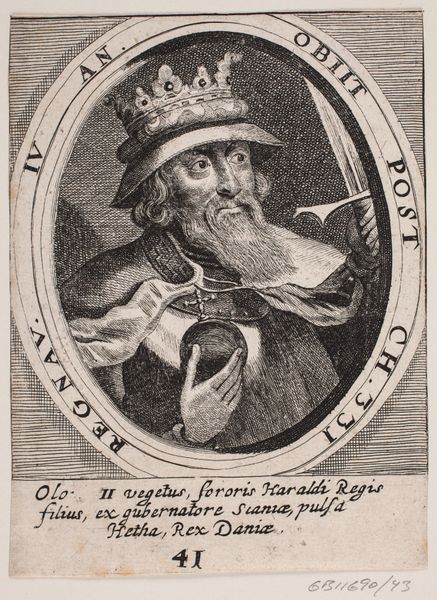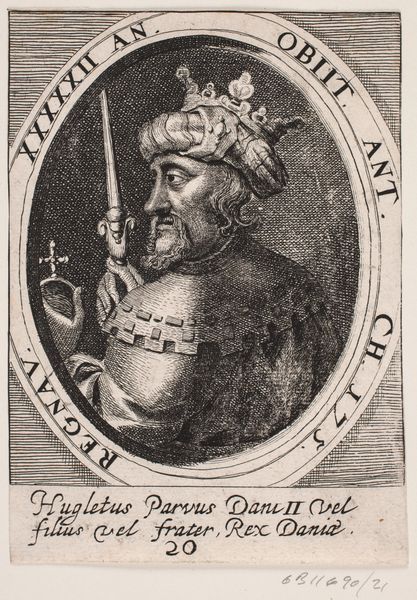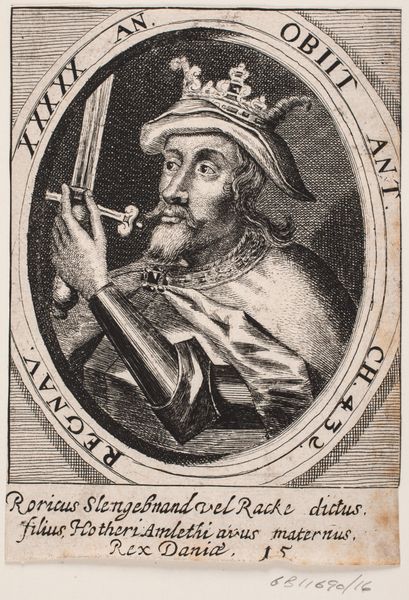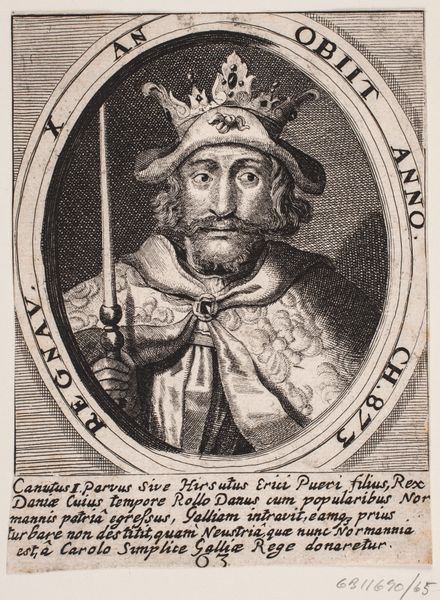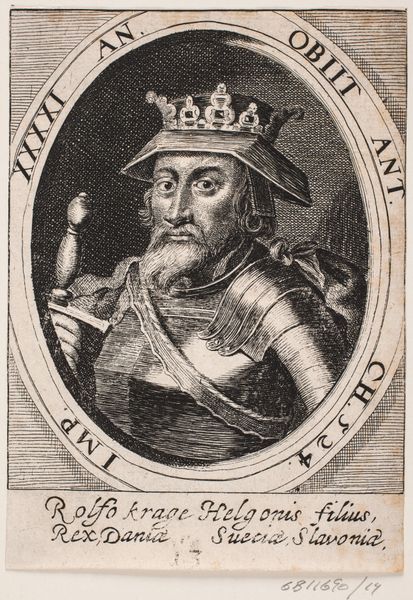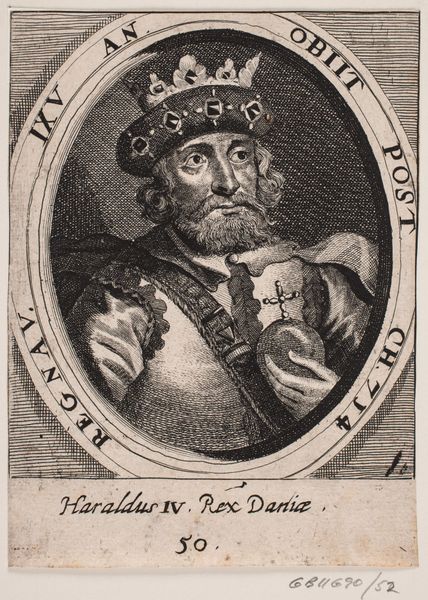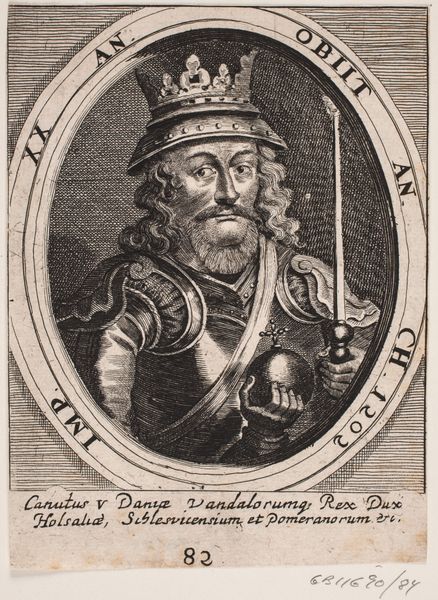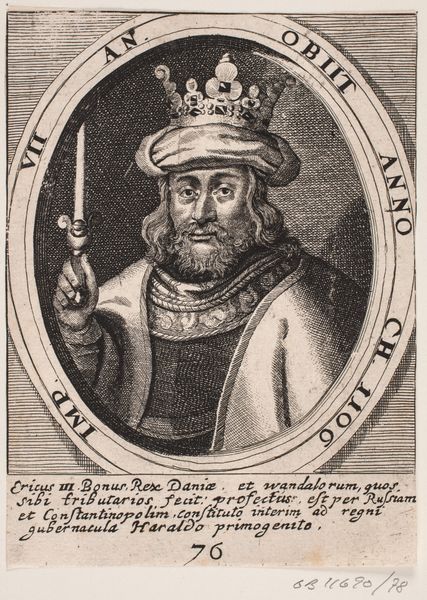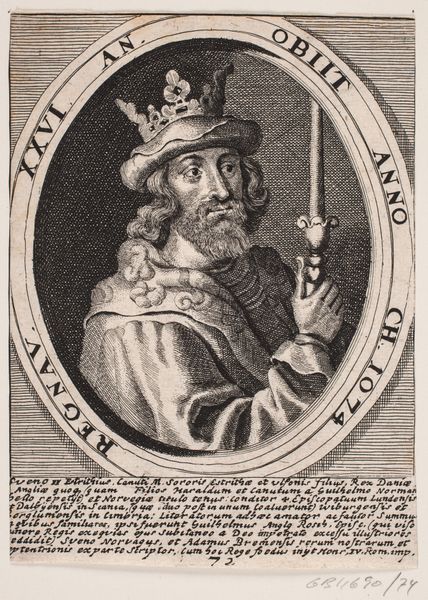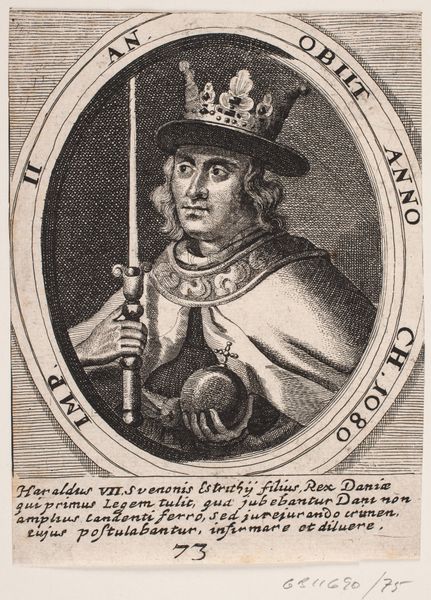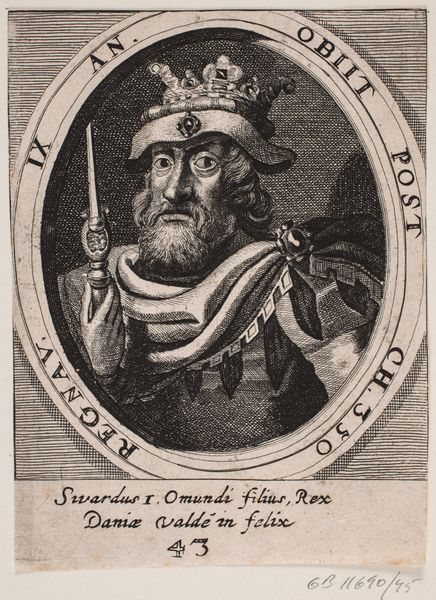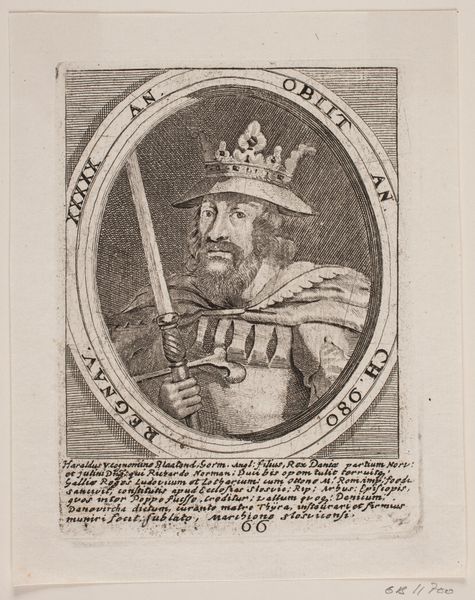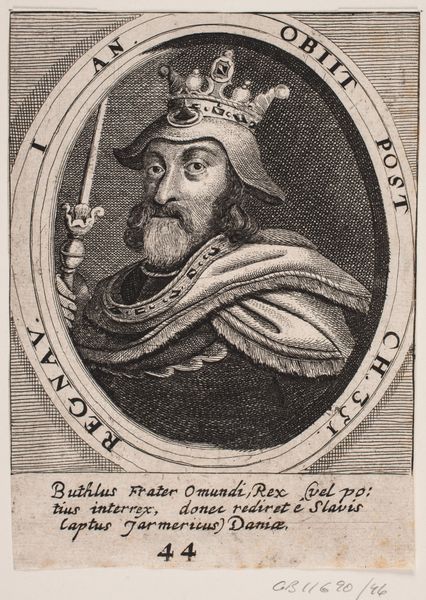
print, engraving
#
portrait
#
baroque
# print
#
old engraving style
#
history-painting
#
engraving
Dimensions: 140 mm (height) x 100 mm (width) (bladmaal)
Curator: This engaging print, dating back to 1646, is entitled “Harald Klak." You can find it in the collection of the SMK, Statens Museum for Kunst. Editor: There's something really stark and direct about it, almost confrontational despite being contained within that oval frame. I’m drawn to the textures created through the engraving – the fur, the face, even the density of the background. Curator: As a print, the immediate question is about its production, the act of repetitive labor, and the accessibility this medium provides for the dissemination of imagery and, in this case, the construction of a historical figure. Think about who would have purchased such a portrait and why. Editor: That’s key. Because portraits like this circulated, not just as likenesses but also as statements about power and identity, even propaganda. Displaying images of rulers – real or imagined, positive or negative – shaped public perception of these figures. Did this image cement Harald’s legacy in a specific way? Was this made to celebrate his lineage or perhaps for other less celebratory purposes? Curator: Exactly. Furthermore, the text beneath reinforces specific interpretations – mentioning Harald Klak being the first Danish King to embrace Christianity. That religious context, then, influences our reading of the portrait. The quality of the paper, the ink used, also affected its reception at the time and impact its preservation and appreciation today. Editor: So, even the materials and techniques used, contribute to shaping the narrative and influencing public perception of the portrayed figure over time. It emphasizes the active role prints played in disseminating cultural and political information. What stories did these affordable reproductions carry out into the world, influencing how the people thought? Curator: A question well worth pondering. Editor: Indeed. An enduring image, physically formed through labor but existing primarily as a social and political construct.
Comments
No comments
Be the first to comment and join the conversation on the ultimate creative platform.
